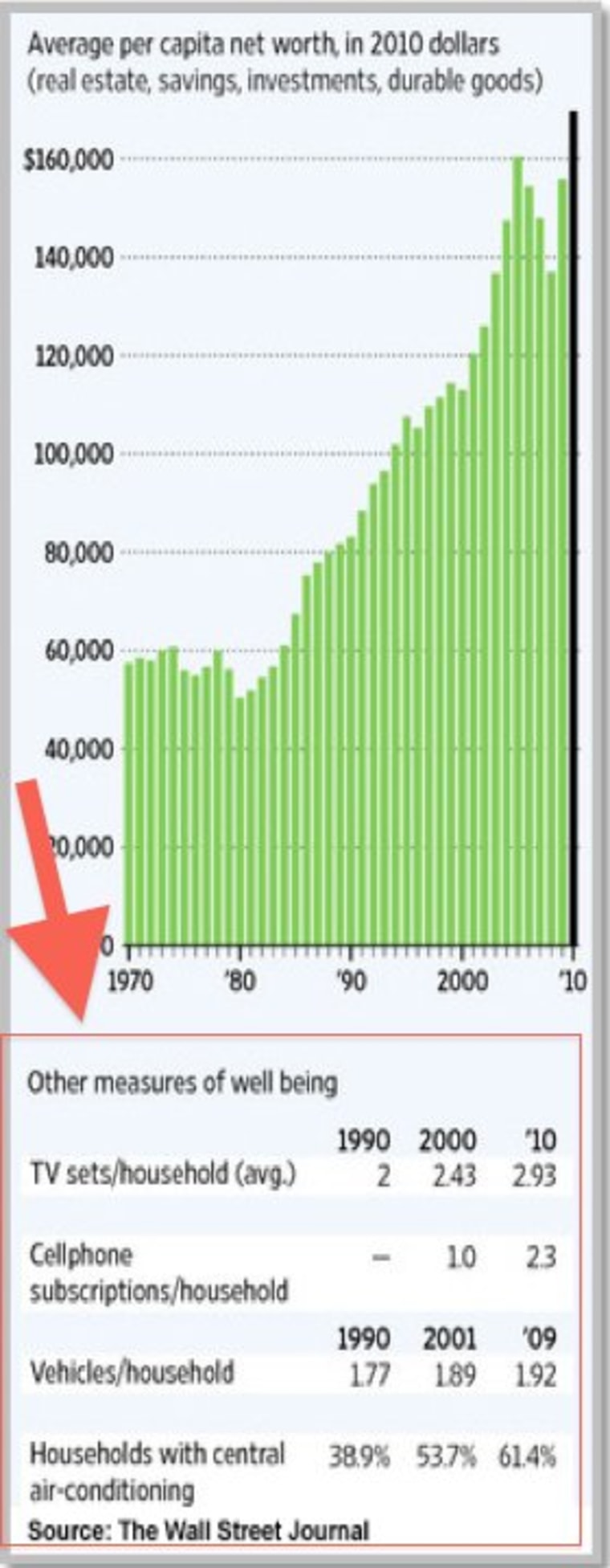Congressman Paul Ryan of Wisconsin, the Republicans' budget guru, released a paper (pdf) last week about income inequality. In the main, it's a treatise on what Republicans see as a choice between closing the gap and choking off growth, what Ezra Klein calls a false choice.
Mr. Ryan's paper is also a glimpse into how Republicans like him see poverty. While expressing some sympathy for the poor, Mr. Ryan also draws on this chart from the Wall Street Journal that shows they have more cars and TVs than they used to. "These consumer goods, which were once considered luxuries only available to the wealthy, if they existed at all, are now available to the overwhelming majority of Americans," he writes.
That says more about the economy in which the poor live than it does about the poor themselves. In a binge fueled by ready credit, Americans as a whole stopped saving money and bought stuff. Over the past 10 years, we also saw an increase in suburban poverty, which means more poor people will have cars.
The conservative view of poverty seems to be that if you're not starving, you're OK. Over the summer, the Heritage Foundation published a report called "Air Conditioning, Cable TV and an Xbox: What is Poverty in the United States Today?" This part still stands out for me:
The overwhelming majority of the poor have air conditioning, cable TV, and a host of other modern amenities. They are well housed, have an adequate and reasonably steady supply of food, and have met their other basic needs, including medical care.
If Americans have a "reasonably steady supply of food," then it's time to move on to tax cuts for the rich.
